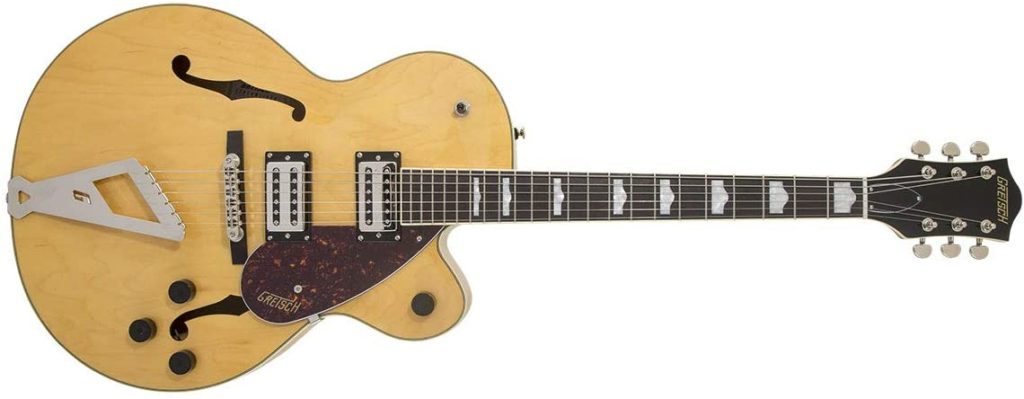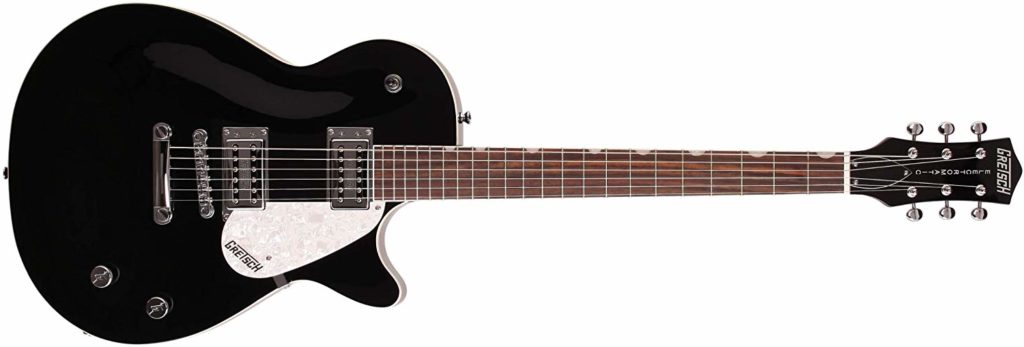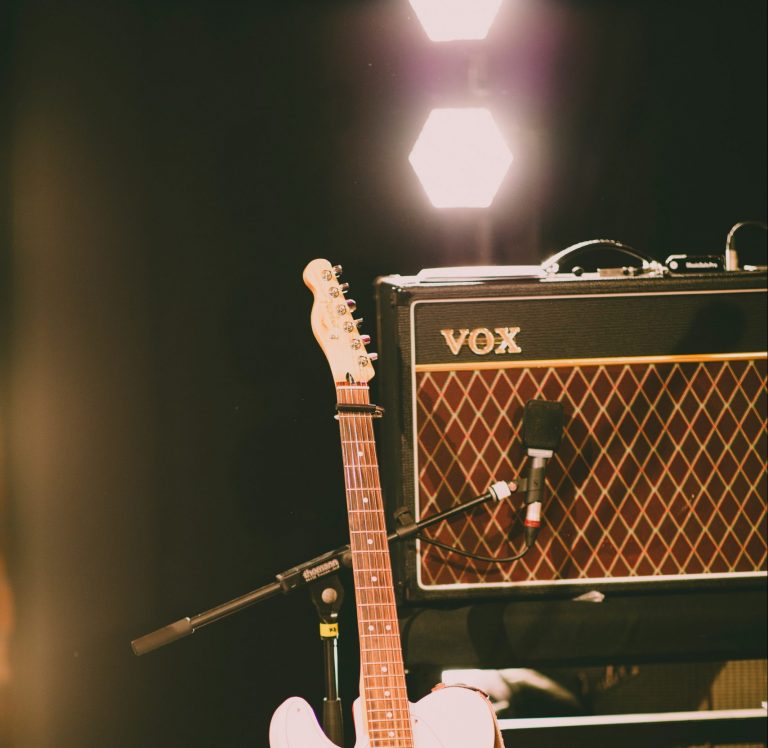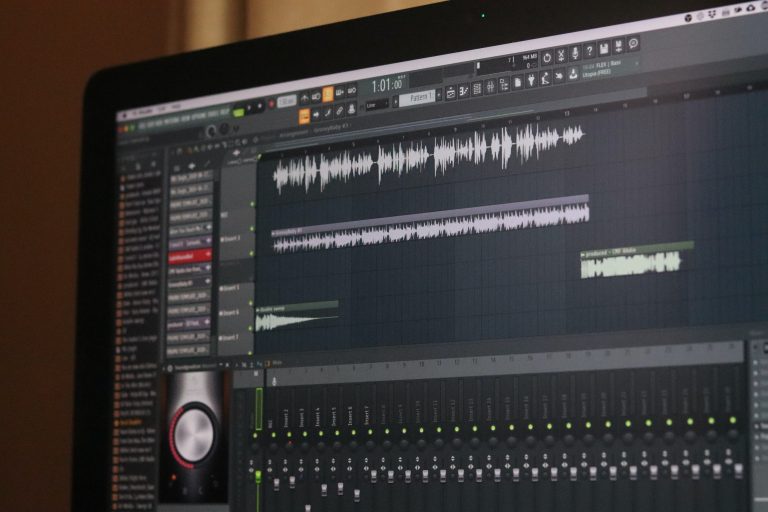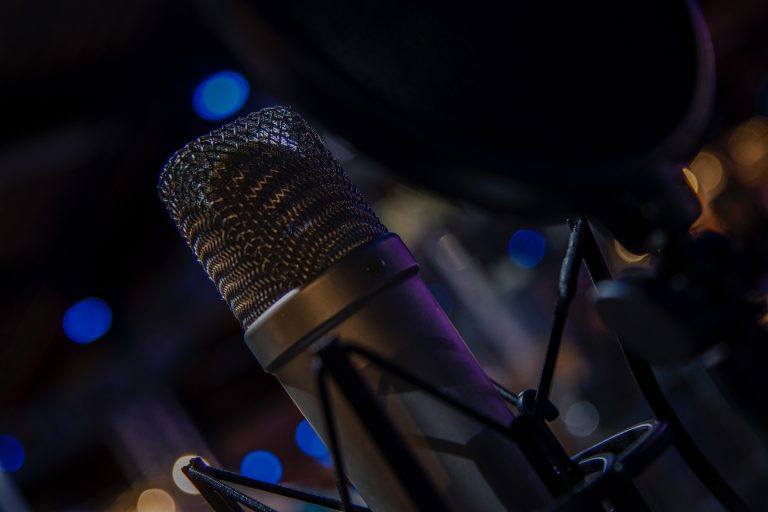Best Electric Guitars Under $500 for Worship
If you’re putting together a rig to play electric guitar in a contemporary praise band, but don’t have a ton of cash, you’re in the right place. In this series of blog posts, I’m going to share with you some fantastic options from my own personal experience that will get you set up with a quality rig able to keep up with the latest sounds of the worship music realm, all without breaking the bank too hard. In my last post, I talked a little about some general recommendations, but I wanted to go into more detail and pare down on worship guitar specifically, because that’s the arena I operate in most frequently now.
Times Have Changed
For those of you out there who’ve been around a while, you might recall that some of the “budget” guitar brands out there, like the Squiers and Epiphones of the world, generally didn’t have the best quality gear. It used to be that you couldn’t really count on getting a consistently decent instrument until you spent close to $500, but nowadays that just isn’t the case. I actually kind of find it funny that there are still so many people around that scoff at these instruments simply because the names printed on their headstocks don’t say “Fender” or “Gibson.” Their loss, and our gain! But on the same token, I do want to stress that if you’re planning on performing with the instrument you’re picking up, getting the absolute bottom of the barrel from any brand is just not the best idea. You need to select an instrument that plays well and sounds great so it encourages you to play and keep improving.

The cool thing is, with all the options from manufacturers out there, there are a lot of fantastic builders around the world putting together some quality instruments for a great price. The downside is, the massive increase in brands and all their confusing model numbers out there (I’m looking at YOU, Ibanez) has made it rather difficult to make a decision on what’s right for you when you’re putting together your rig, especially as a first or even second time buyer. Hopefully this article will help shed some light on some of the confusing stuff for you.
So What Even Is “Worship Guitar?”
So before we get into talking about the models and instruments, we should talk a little about the defining “sound” of worship guitar. Guitarists in the contemporary worship genre place a high emphasis on tone, with most musicians opting for their base sound to be relatively or totally clean (meaning little to no drive), with a pretty heavy emphasis on mid- and high-range in the EQ spectrum. They then build upon that with a multitude of effects, from light to medium overdrive, one or more delays, and lush reverb, and more. The guitars they often use are Fender-style, particularly like the Stratocaster or, probably most frequently, the Telecaster, which is why this list nods to a lot of those guitars as you read further on. From their effects, which may either be from a modeler or individual pedals, they’ll run either into an amplifier, often a high-end tube amp like a Vox AC30 or Fender Deluxe Reverb, or an amp modeler like the Strymon Iridium or Kemper Profiler.
Single-Coil and Humbuckers
So now that we know a little bit of the what we’re going for, let’s start talking a little about the how to get there. When you’re going out shopping for an electric guitar, if you’ve done a little reading, you’ll know that there are two big general kinds of pickups: single-coil and humbuckers. Within those two types are a plethora of different kinds but in general they can be summed up within them.
Single-coil pickups are, as their name implies, a single coil of copper wire wound around a magnet and pole pieces, which pick up the vibrations of the guitar’s strings and send that frequency information to the guitar’s output, out through a cable, and eventually to an amplifier. In general, you’ll hear single-coil pickups described as bright, snappy, or chimey. Because of their bright attack they do a great job of cutting through a mix, and sound great with clean or low to medium gain tones, making them a favorite of many modern worship guitarists.
The downside to single-coil pickups is that they also do a pretty good job of picking up interference from electrical devices, like computers or fluorescent lights. One solution to the noise is to use a humbucking, or dual-coil, pickup. These pickups use two coils of wire instead of one with opposite windings and polarities. This arrangement cancels unwanted noise but keeps the signal from the guitar strings intact. In general, humbuckers have a warmer, rounder sound to them, and sound great with higher gain. A classic guitar that features humbucking pickups is the Gibson Les Paul. There is another kind of awesome humbucking pickup that absolutely shines in worship music. We’ll highlight that later on in the article.
Play What Feels Like Yours
Even though a lot of worship guitarists opt for the single-coil guitar, there are absolutely exceptions to the rule, and you’ll find guitarists using all kinds of different guitars in the worship setting, just like in other arenas. At the end of the day, everyone has their preferences, and ultimately it’s up to you to decide what kind of instrument sound and feel you like. This article is only meant to be a guide, and hopefully introduce you to some great options to go out and try in the local store, or pick up online and try out. My best advice before we get to the list is to listen to each of these instruments, and if you can, get into your local shop and put your hands on one and demo it. Even if you know one chord, plug it in and see what it sounds like!

Now I know that can be a little nerve-wracking to some folks, especially those with limited experience on their instruments and just figuring things out, but it’s totally worth it to experience for yourself. Remember, every shredder out there started from zero at some point. Eventually as you start to get a feel for the instruments and their characteristic sounds, you’ll learn what you like and don’t like, and that will help guide your decision.
It’s also worth a mention that if you’re brave and know a little of what you’re doing, the used market can be a goldmine that can get you instruments from that next tier up from the guitars we’re talking about today, at that more budget-friendly price. Often local guitar shops and pawn shops have great deals as long as you know what to look for in a good used instrument. If you don’t, I recommend bringing a friend with you that does to make sure you get a good deal and a good instrument. Reverb.com is also a fantastic marketplace, where buyers can pick up those used instruments with confidence. There are definitely some amazing gems of all price ranges available on their network, and I browse through the listings regularly myself!
The Guitars
So in general, there are a handful of really common electric guitars we see in the contemporary worship world. A lot of players’ choices are centered around the pickups in the guitars, in addition to the body style. So let’s take a look at some excellent, affordable offerings from each camp! If you have any questions about any of these models, just drop me a comment below!
Telecaster
Probably the most commonly used electric guitars in the worship realms happens also to be one of the oldest around: the Telecaster. Invented around 1950 and originally named the Broadcaster, the Telecaster was the first commercially successful solid-body electric guitar. With its blocky, simple body design, bolt-on neck, and bright single-coil pickups, the guitar (colloquially known as the “Tele”) is easily distinguishable. The Tele has had many redesigns and different setups and designs over the years, and many copies as well, and for good reason. In addition to having such a simple, timeless look, the guitars play well and sound great.
While you can obviously spend pretty much as much as you want to on a classic Tele, there are also some fantastic options out there for under $500 that will treat you and your listeners very well in the worship genre. Whether you like humbuckers or single-coils, there is a Tele, or a Tele clone, for you. The single-coil setup is the traditional route, and this guitar’s smooth-sounding neck pickup, borderline harsh bridge pickup, and 3-way selector switch give it a great amount of tonal possibilities. Some folks do find that bridge pickup to be a little too harsh, and there are some Tele-style guitars out there, like the G&L ASAT listed below, that were designed specifically to round out that harshness. If that’s something that’s your speed, definitely check one out! Below are a handful of my favorites. Click on the links in the images to learn more.
Stratocaster
The Stratocaster is finally starting to show up more and more frequently in the contemporary worship world, especially as many contemporary artists are beginning to bridge the gap between other genres that make great use of this extremely versatile instrument. The Strat has been around almost as long as the Telecaster, and has a lot of history and legacy as one of if not the most prominent electric guitar out there today. This style of guitar has a wide array of tonal possibilities, thanks to its 3 pickups, 2 tone knobs, and 5-way selector switch. From its warm and rich-sounding neck pickup on one end of the spectrum, to its bright and punchy bridge pickup, and the available combinations thereof, the Strat is a great all-around guitar that is useful in a lot of different situations, whether you’re playing rhythm deep in the mix or playing punching leads.
I personally have just started utilizing a Strat on stage for worship, and it’s quickly becoming one of my favorites, for its distinct sound, versatility, and comfortable design. Because this is so widespread a model, quite like the Telecaster, there are a ton of very reasonably priced options out there. Here are some of the ones I recommend in that under-$500 range. Click on the links in the images to learn more.
Filter’Tron
In 1954, inventor Ray Butts worked out a solution to the 60-cycle hum noise problem from single-coil pickups, by putting two coils out of phase with each other in series, giving birth to the Filter’Tron pickup. Right at around the same time, Gibson came out with a similar solution in the humbucker. While Filter’tron pickups are also humbuckers, they have slightly different characteristics, and therefore a distinct sound from their larger humbucking cousins. They are physically smaller in footprint, have tighter coils in closer proximity, and carry the bright punchy sound of single coils without the 60-cycle hum issue. Even still, these pickups do overall tend to have a warmer, fuller-bodied sound than their single-coil cousins, so that might help guide you on your guitar search as well.
Because a bright sounding pickup is helpful for a guitar to cut through a mix of a large band, it’s no surprise that guitars with Filter’Tron pickups have become wildly popular in the worship genre. Gretsch and Fender have offerings with ‘Tron style pickups in them, though Gretsch guitars are the main guitars you’ll see with this style of pickup, since it’s part of their claim to fame. There used to be available a Squier Cabronita Telecaster within our sub-$500 price bracket, but you can only get them on the used market nowadays. I wish they were still in production! In addition to their utility in the worship world, the classy aesthetic of the Gretsch guitar is pretty second to none in my humble opinion. Below is a list of my favorites that you can get brand new in this price range:
Which Do I Pick?
Alright so now that we’ve helped you narrow things down a little, there are still 12 guitars on this page. How do you pick the right one? Part of that comes down to asking some follow-up questions, and picking the instrument based on the characteristics we’ve read about together so far:
- What is the situation at your worship venue?
- Will you be the only guitarist, or are you one of two or three?
- Are you primarily going to be playing lead or rhythm?
- How is the wiring?
- What other instruments are present?
- Acoustic guitar and piano both play in similar frequency spaces. Will you need to be heard, or be able to blend with them?
- Are you playing along with tracks like those from Multitracks.com?
Here’s the good news: All of that can be covered fairly decently by every instrument on this list. Even better, the real answer to “Which do I pick?” can be answered by this:
Go and play them!
If you have a guitar shop near you, or a friend that owns one or more of these awesome instruments, get them into your hands, and see how they feel. Pay attention to the way the neck feels in your hands, how comfortable it is to hold the guitar, and how it sounds through an amp. If you don’t have a shop near you, we live in a wonderful digital age where even if you order an instrument online, a lot of places, Amazon sellers included, will offer you a pretty gracious return period that will tell you whether you like an instrument or not.
So I leave you with this: Go out and get your hands on a guitar and start playing. Pick anything on this list or anything that will make you pick up your instrument and play, and use it to praise King Jesus with everything you can! Again, if you have any questions on the subject of guitars or outside of this, I’d be glad to answer them in the comments below!












